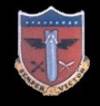|
On 8 January 1945, most of the ground crew personnel were troop-trained
to Fort Lawton, Seattle, Washington for the boat trip to Guam.
A few selected ground personnel remained behind with the aircrews
because they would fly with them as passengers to Guam. They arrived
at Fort Lawton on 11 January 1945. The trip was a lengthy one
- 31 days with a six-hour stop in Honolulu. The ship zigged and
zagged continuously and most everyone was seasick for the first
five or six days. The ship docked at Agana, Guam, on 18 February
1945, ground personnel were trucked to their bivouac area - a
location adjacent to what became North Field. There they immediately
set to work assembling quonset huts and building plywood structures
that would become orderly rooms, day rooms, barracks etc. They
ingeniously rigged barrels with electric motors and agitators
for use as washing machines. It was a "Rube Goldberg" creation
but it worked until better equipment arrived from stateside. In
the meantime, the Navy Sea-Bees were busy building runways, taxi-strips
and aprons on North Field in preparation for the arrival of the
air echelon.
The
ship docked at Agana, Guam, on 18 February 1945, ground personnel
were trucked to their bivouac area - a location adjacent to what
became North Field. There they immediately set to work assembling
quonset huts and building plywood structures that would become
orderly rooms, day rooms, barracks etc. They ingeniously rigged
barrels with electric motors and agitators for use as washing
machines. It was a "Rube Goldberg" creation but it worked until
better equipment arrived from stateside. In the meantime, the
Navy Sea-Bees were busy building runways, taxi-strips and aprons
on North Field in preparation for the arrival of the air echelon.
Soon
after the airfield was complete, the air echelon of the 39th Group
arrived and daily training missions were conducted in preparation
for the aerial assault on Japan.
Ciucci
was assigned to Aircraft P-31, commanded by 1st Lt. Henry Snow.
The ground crews worked well together and were competent in the
repair of all types of mechanical problems. The ground crew consisted
of S/Sgt Jeffery Caron of Maine, Crew Chief, and fellow mechanics
Sgt Norman Brug of Buffalo, NY, Sgt Joseph Hanna of Rhode Island,
Sgt Jerome Jacobs of Pennsylvania, Sgt Allen Neidhart of Indiana,
and Pete Ciucci of Pennsylvania. Pete specialized in the electrical
repairs of P-31. It was not unusual for the ground crew to work
continuously from the time a mission ended to when the next one
went out - perhaps 24 to 36 hours later without rest - in order
to have the aircraft ready for the next mission. The ground crew
would sleep while the air crew was in the air and vice versa.
Sometimes when the mission was long enough, some of the ground
crew would have enough time to go down the island to the Sea-Bee's
galley for a good meal. The Sea Bees were always willing to share
their great food even though their guests were not Navy.
This
was the life of the P-31 ground crew from February 1945 until
the hostilities ceased in August of that year.
Discharge
was based on a points system and inasmuch as Pete Ciucci was low
point man he had to stay an additional six months.
From
August 1945 until February 1946, Pete was assigned to a variety
of tasks. With a background as aircraft electrician, his talents
were utilized putting together electric lines underground throughout
the area. He had a detail of four Japanese prisoners that had
been brought from Rota, to dig the trenches and refill them as
the cable was laid. These prisoners would tell how they endured
the endless bombing that Rota received. Many bore the scars of
shrapnel and glad the war had ended.
Later
when the 39th Bomb Group was deactivated and Pete was assigned
to the 19th Group where he accumulated enough points to by February
of 1946 to be sent home and discharged. He, and a group of others,
were loaded aboard an LST and sent north to Saipan - only a short
distance from Guam. They were packed aboard the USS Olmsted and
shipped to Oakland, CA - a matter of 13 days.
After
a few days in Oakland for processing, the men were sent to their
respective separation centers. Pete's route home took him through
Los Angels and Tinker Air Force Base to Fort Dix, New Jersey,
where he was discharged on 10 March 1946.
A
funny thing happened to Pete while he was at Fort Dix. After processing
one day, he decided to get off base for a few hours. So he donned
"Class A's," and took a cap into Trenton. There he looked up an
old Guam buddy, Dan D' Angelo's telephone number to arrange a
quick visit. He hailed the first yellow cab. Guess who was driving
it? None other than his friend Danny! Pete accompanied him back
to his home where Dan's mother cooked them both a delicious Italian
meal - the first Pete had had in long time. After a night on the
town in which they hit all nightspots, Danny took Pete back to
Fort Dix in time for reveille. What a night! It would be Ciucci's
last in the military: the following day he rejoined civilian ranks. |





